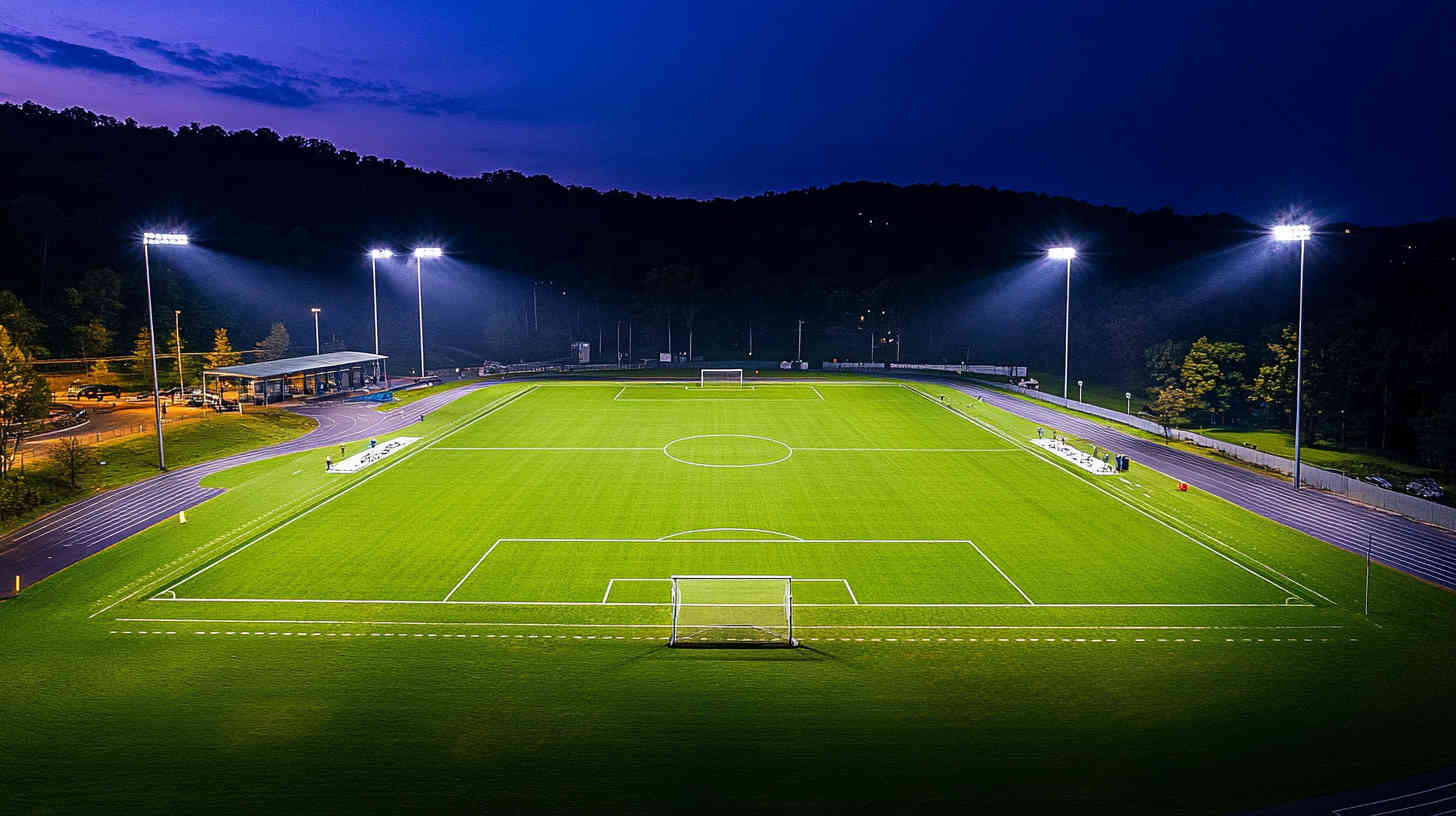The Ultimate Guide to High-Mast LED Stadium Lighting
High-mast LED stadium lighting has revolutionized how we illuminate sports venues, offering unparalleled visibility and energy efficiency. Unlike outdated metal halide or halogen systems, LED technology delivers superior brightness, longer lifespan, and precise light control, all while cutting energy costs by 50% or more. For football fields and large stadiums, proper high-mast lighting isn’t just about visibility; it’s about player performance, broadcast quality, and fan experience. This guide dives into the key factors that matter most: optimal pole height, precise beam angles, advanced glare control, and professional lighting design tailored for sports. If you’re still using traditional lighting, you’re not just wasting money, you’re compromising on quality.
What Are High-Mast LED Lights?
High-mast LED lights are heavy-duty lighting systems mounted on tall poles (typically 60 to 150 feet), designed to illuminate large areas with uniform, high-intensity light. Unlike standard pole lights, which are shorter and cover smaller zones, high-mast systems provide wide-area coverage—perfect for stadiums, sports complexes, and even highways where broad, consistent lighting is critical.
Key Applications:
- Sports Venues: Football fields, baseball diamonds, and racetracks need wide, shadow-free illumination.
- Large Complexes: Parking lots, industrial yards, and airport tarmacs benefit from high-mast efficiency.
- Transportation Hubs: Highways and interchanges require long-distance visibility for safety.
Why LED Outperforms Traditional Lighting:
- Energy Savings: LEDs use half the power of metal halide lights for the same brightness.
- Longevity: 50,000+ hours vs. 10,000 hours for halide—fewer replacements, lower maintenance.
- Instant Performance: No warm-up time; full brightness immediately, even in cold weather.
- Precision Lighting: Adjustable beam angles reduce light spill and glare, keeping illumination where it’s needed.
Key Design Considerations for Football Field Lighting
1 Optimal Pole Height for High-Mast Lighting
The height of lighting poles directly impacts visibility, glare, and light uniformity. For football fields, the recommended pole height typically ranges from 60 to 100 feet, depending on field size and lighting requirements.
- Field Size & Light Distribution: Taller poles (80-100ft) are ideal for large stadiums, ensuring even light spread without dark spots. Smaller fields may use 60-80ft poles.
- Glare & Visibility: Higher poles reduce direct glare for players and spectators, but improper angles can still cause visibility issues.
- Uniformity: Proper height ensures consistent lighting across the entire field, crucial for player performance and TV broadcasts.
Work with lighting designers to determine the ideal height—too low increases glare, too high may reduce intensity.
2 Choosing the Right Beam Angle
Beam angle determines how light spreads from the fixture. For football fields, 30° to 60° beams offer the best balance between coverage and intensity.
- Narrow Beam (15°-30°) – Best for long-distance throw (e.g., lighting the center of the field).
- Medium Beam (30°-60°) – Ideal for general field coverage, minimizing spill light.
- Wide Beam (60°-90°+) – Used sparingly for peripheral areas (stands, walkways).
Why It Matters: The right beam angle ensures optimal brightness where needed while reducing wasted light and glare.
3 Glare Control in Stadium Lighting
Glare isn’t just annoying—it can disrupt players and spectators. Proper glare control involves:
- Optical Design: LED fixtures with precision lenses and reflectors direct light downward, not into eyes.
- Shielding & Cutoff Angles: Full-cutoff fixtures prevent upward light spill.
- Pole Placement: Angling fixtures away from sightlines reduces direct glare.
- Compliance: Meeting FIFA, UEFA, and IES standards ensures broadcast-quality lighting with minimal glare.
Key Takeaway: Glare-free lighting improves safety, performance, and viewer experience.
4 Uniformity and Light Distribution
A well-lit football field should have no dark patches or overly bright spots. Uniformity ratios (minimum to average illuminance) should be 0.7 or higher for professional fields.
- LED Advantages: Unlike metal halide, LEDs provide consistent brightness with no flicker or hot spots.
- Calculating Uniformity: Lighting design software ensures even distribution before installation.
- TV Broadcast Requirements: High uniformity (0.8+) ensures cameras capture clear, flicker-free footage.
Pro Tip: Always simulate lighting layouts before final installation to avoid costly adjustments later.
Additional Factors in High-Mast LED Lighting Design
When choosing high-mast LED lights for a football field, it is essential to match the wattage and lumen output with the field’s level of use. Training fields may only need 200 to 300 lux, while professional stadiums require over 1000 lux. LEDs with output above 100,000 lumens per fixture are typically used for such environments. Color temperature is another important factor—5000K to 5700K provides a daylight-like experience and improves visibility and perception. A high color rendering index (CRI above 80) is ideal for accurate color distinction. Finally, durability matters. Outdoor stadium lights must withstand rain, wind, and dust. Look for fixtures with IP66 or higher ratings, corrosion-resistant housing, and thermal management systems to ensure long-term performance.
Compliance with Industry Standards
Football field lighting must meet strict regulations:
- FIFA/UEFA: Requires 2000+ lux for top-tier matches, high uniformity, and glare control.
- IES RP-6 & EN 12193: Defines lighting levels for different competition tiers.
- Broadcast Standards: Flicker-free, high-CRI lighting for HD cameras.
Non-compliance risks fines, poor visibility, and broadcast issues. Always verify standards before installation.
Conclusion100words
Designing high-mast LED lighting for a football field involves more than just installing bright lights. It requires thoughtful planning around pole height, beam angle, glare control, and uniformity. These design elements directly influence player performance, viewer experience, and the stadium’s compliance with global standards. LED lighting stands out as the top solution thanks to its precision, efficiency, and adaptability. If you are planning or upgrading LED stadium lighting system, now is the time to talk to lighting professionals and request a customized layout or quote. Quality lighting is not an expense, it’s an investment in every game played under it.
Read More: How to Detect Nursing Home Neglect: Signs Families Should Not Ignore

